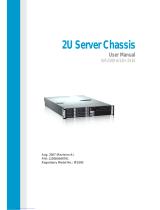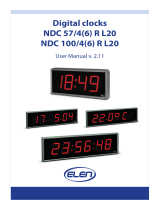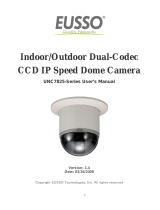
Installing A 2.5 Inch Hard-Drive Blank............................................................................................................. 56
Removing A Hot-Swap Hard Drive...................................................................................................................57
Installing A Hot-Swap Hard Drive.................................................................................................................... 57
Removing A Hard Drive From A Hard-Drive Carrier.........................................................................................58
Installing A Hard Drive Into A Hard-Drive Carrier............................................................................................59
Optical Drive (Optional)...........................................................................................................................................59
Removing The Optical Drive.............................................................................................................................59
Installing The Optical Drive..............................................................................................................................60
Cooling Fans............................................................................................................................................................60
Removing A Cooling Fan...................................................................................................................................61
Installing A Cooling Fan....................................................................................................................................62
Removing The Fan Tray....................................................................................................................................62
Installing The Fan tray .....................................................................................................................................63
Internal USB Memory Key (Optional)..................................................................................................................... 63
Replacing The Internal USB Key......................................................................................................................64
Expansion Cards And Expansion-Card Risers........................................................................................................ 64
Expansion Card Installation Guidelines............................................................................................................65
Removing The Left Expansion Card Riser Blank.............................................................................................. 66
Installing The Left Expansion Card Riser Blank............................................................................................... 67
Removing The Right Expansion Card Riser Blank............................................................................................68
Removing An Expansion Card From Expansion-Card Risers 2 and 3............................................................... 68
Installing An Expansion Card Into The Expansion-Card Riser 2 and 3.............................................................73
NDC Riser (I/O Riser 1)............................................................................................................................................73
Removing The NDC Riser (I/O Riser 1)............................................................................................................. 73
Installing The NDC Riser (I/O Riser 1)...............................................................................................................74
Network Daughter Card..........................................................................................................................................75
Removing The Network Daughter Card........................................................................................................... 75
Installing The Network Daughter Card.............................................................................................................76
SD vFlash Card........................................................................................................................................................76
Replacing An SD vFlash Card...........................................................................................................................77
Internal Dual SD Module........................................................................................................................................ 77
Removing The Internal Dual SD Module..........................................................................................................77
Installing The Internal Dual SD Module........................................................................................................... 78
Internal SD Card..................................................................................................................................................... 78
Removing An Internal SD Card.........................................................................................................................79
Installing An Internal SD Card..........................................................................................................................80
Integrated Storage Controller Card........................................................................................................................ 80
Removing The Integrated Storage Controller Card..........................................................................................80
Installing The Integrated Storage Controller Card...........................................................................................81
RAID Battery...........................................................................................................................................................82
Removing a RAID Battery.................................................................................................................................82
Installing The RAID Battery..............................................................................................................................83






















